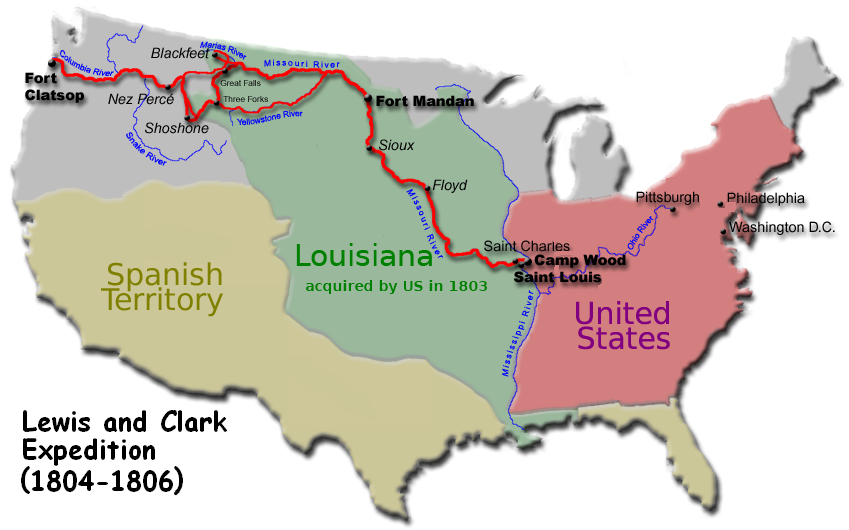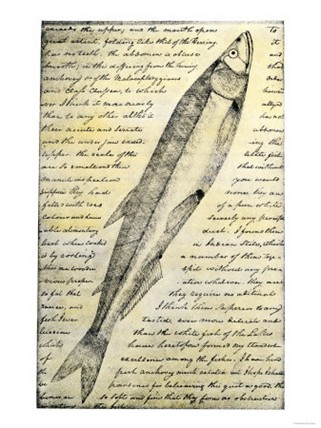
On May 21, 1804, Lewis and Clark
depart from St. Charles, Missouri, and begin the upstream struggle
against the big muddy - the Missouri River.
As the Corps of
Discovery pressed north and west, ever deeper into the welter of
shifting intertribal antipathies on the upper Missouri, they
understood little of its complexity or the history of the alliances
between tribes and competing enterprises. Like earlier 'peace
commissions' of LaVerendrey, Truteau, and Evans that tried to forge
peace with quill and parchment, they failed utterly at
peacemaking. In fact, for the most part the Indians viewed
their efforts at peace-making as a farce.
- June 26 - Reach the Kansas river
- July 27 - reach modern day Omaha
- October 20, 1804, Lewis and an Arikara guide visit the
abandoned On-A-Slant village, at the Heart River, where the 1781
small pox epidemic decimated the tribe. Skulls and bones were
still piled in corners of the village as a testament to the horror
that had visited this once thriving trading center. (click here for a
video of On-A-Slant) The Corps of Discovery camped a mile
upstream from the village and encountered its first grizzly
bear.
- October 24 - the expedition was well north of present
Bismarck.
- October 27 - arrived at the Mandan Villages on the Knife River,
welcomed by the legendary Mandan chief, Black Cat. Had they
arrived a few months earlier, the explorers would have found the
villages full of trading visitors; Crow, Assiniboines, Cheyennes
and Kiowas, along with white traders from the North West company,
the Hudson's Bay Company, and businessmen from St. Louis looking to
open the way west.
Click here for more on Lewis and Clark

Lewis and
Clark were quick to recognize the Mandan to be crafty and shrewd
traders. During the trading fairs of late summer the dancing,
feasting and celebrations would go one through the night, and the
trade goods brought here by the various tribes made it a Walmart of
the plains, where they would find furs of all kinds, meat products,
baskets of produce, musical instruments and blankets, tanned
buffalo hides and leather goods of all kinds. This was a festive
time of celebration in the five villages of Mandan and Hidatsa.
There were two
Mandan and three Hidatsa villages at the Knife River. A large
village on the west bank was led by Big White and Little Raven, and
the second upriver village was led by Black Cat and Raven Man
Chief.
click here for more
The three
Hidatsa villages were located a stones throw away, straddling the
Knife River. Between them, there were 230 lodges, each
housing twenty-five to forty people. Lewis and Clark estimated that
the Hidatsa and Mandan could raise thirteen hundred warriors, so
they were predisposed to caution before they felt certain of the
peaceable nature of their hosts. The Hidasta were accustomed
to riding off on war parties that took them away from home for
months at a time, while the Mandan tended to hunt closer to their
home villages.
Related People
Related Events
Related Flashpoints